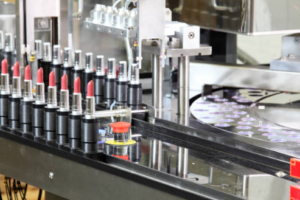The Eco-Conscious Consumer

In a world where climate change is an ever-present concern, individuals are increasingly recognizing the power of their choices in shaping a sustainable future. The beauty industry, often criticized for its environmental impact, is undergoing a transformative shift towards eco-conscious practices. In this comprehensive guide, we explore how you, as an eco-conscious consumer, can make beauty choices that not only enhance your well-being but also contribute to the fight against climate change. From sustainable packaging to mindful ingredient sourcing, let’s delve into the myriad ways your beauty routine can become a force for positive environmental change.
The Environmental Impact of the Beauty Industry
1. Packaging Woes: The beauty industry grapples with a staggering amount of packaging waste, much of which ends up in landfills or oceans. Traditional beauty products often come in single-use plastic containers, pumps, and caps, contributing significantly to the global plastic pollution crisis. The extraction and production of these materials generate greenhouse gas emissions, further exacerbating the industry’s environmental footprint.
As consumers, understanding the life cycle of product packaging is crucial. From extraction to production, transportation, and eventual disposal, each stage has environmental implications. The linear nature of the traditional packaging model, where products are made, used, and then discarded, has prompted a shift towards circular economy models within the beauty industry. Brands are now exploring sustainable packaging options, including refillable containers and biodegradable materials, to minimize their environmental impact.
2. Carbon Footprint of Ingredients: The globalized nature of the beauty industry contributes to the carbon footprint of its ingredients. Many products contain components sourced from different corners of the world, requiring extensive transportation. The transportation of raw materials and finished products involves the burning of fossil fuels, releasing carbon dioxide (CO2) into the atmosphere.
Eco-conscious consumers can consider the origins of the ingredients in their beauty products. Brands that prioritize local and sustainably sourced ingredients often contribute to lower transportation-related emissions. Additionally, some companies have adopted practices such as carbon offsetting to counteract the environmental impact of their supply chains.
3. Water Consumption and Pollution: The beauty industry, particularly in the production of skincare and haircare products, consumes significant amounts of water. Water-intensive processes, such as growing botanical ingredients and manufacturing formulations, contribute to water scarcity in certain regions. Furthermore, the discharge of untreated wastewater from beauty product manufacturing facilities can lead to water pollution, affecting aquatic ecosystems and communities downstream.
Eco-conscious consumers can choose products from brands that implement water conservation measures in their production processes. Additionally, supporting brands with wastewater treatment systems helps minimize the industry’s contribution to water pollution.
4. Biodiversity Concerns: The extraction of natural ingredients for beauty products can pose risks to biodiversity. Unsustainable harvesting practices may lead to deforestation, habitat destruction, and the depletion of plant and animal species. This impact is particularly significant in regions rich in biodiversity, where the demand for exotic ingredients can contribute to ecological imbalance.
By choosing beauty products from brands committed to sustainable and ethical sourcing practices, consumers can play a role in preserving biodiversity. Look for certifications or transparent sourcing information that ensures ingredients are harvested responsibly, without causing harm to ecosystems or wildlife.

Sustainable Solutions
1. Refillable Packaging: Embrace beauty brands that offer refillable packaging options. Refillable containers significantly reduce waste by allowing consumers to replenish their favorite products without discarding the packaging. Look for brands that prioritize refill systems for items like skincare, foundation, and fragrance.
2. Biodegradable Materials: Seek out products with packaging made from biodegradable or compostable materials. Innovative brands are exploring alternatives such as bamboo, sugarcane, and algae-based plastics. These materials break down more easily in landfills, reducing their environmental impact.
3. Minimalist Packaging: Choose products with minimalist packaging designs that prioritize function over excess. Brands adopting a less-is-more approach help minimize waste and decrease the overall environmental impact of their products.
4. Local and Sustainable Sourcing: The sourcing of ingredients is a critical aspect of the beauty industry’s environmental impact. Many conventional beauty brands rely on global supply chains that involve extensive transportation of raw materials, contributing to a higher carbon footprint. In contrast, eco-conscious beauty brands prioritize local and sustainable sourcing practices.
Local sourcing reduces the distance ingredients travel, minimizing the associated carbon emissions from transportation. It also supports regional economies and local communities, fostering a more sustainable and interconnected global beauty ecosystem. As a consumer, consider products that emphasize local and sustainable ingredient sourcing, reflecting a commitment to environmental responsibility.
5. Certified Organic Products: Organic farming practices prioritize sustainability and environmental stewardship. When it comes to beauty products, choosing those with organic certifications ensures that the ingredients are cultivated without synthetic pesticides, herbicides, or fertilizers. Organic agriculture promotes soil health, biodiversity, and reduces the environmental impact of conventional farming methods.
Look for trusted organic certifications such as USDA Organic or Ecocert on beauty product labels. These certifications guarantee that the ingredients are sourced responsibly, supporting both environmental sustainability and the well-being of agricultural ecosystems.
6. Cruelty-Free and Vegan Options: The quest for eco-conscious beauty extends beyond the environment to include ethical considerations such as animal welfare. Cruelty-free and vegan beauty products are crafted without animal testing or the use of animal-derived ingredients. By choosing these products, consumers contribute to a more humane beauty industry.
Look for recognized cruelty-free certifications from organizations like Leaping Bunny or PETA. Vegan certifications further ensure that products are free from animal-derived ingredients, providing a clear indication of a brand’s commitment to ethical and sustainable practices.
7. Transparent Ingredient Lists: A key aspect of mindful ingredient sourcing is transparency. Eco-conscious beauty brands prioritize transparency in their ingredient lists, providing consumers with clear information about what goes into their products. This transparency allows consumers to make informed choices based on their values and specific skincare needs.
As a consumer, take the time to read ingredient lists and familiarize yourself with common skincare ingredients. Brands that openly share information about the sourcing and origin of their ingredients demonstrate a commitment to transparency and environmental responsibility.
8. Indigenous and Traditional Ingredients: Some eco-conscious beauty brands embrace the use of indigenous and traditional ingredients sourced from local communities. This not only supports cultural diversity but also promotes sustainable harvesting practices. Working with indigenous communities to ethically source ingredients helps preserve traditional knowledge and contributes to the economic empowerment of these communities.
Look for brands that actively engage in fair trade practices and partnerships with local communities. By supporting such brands, consumers can contribute to the preservation of biodiversity and the protection of traditional wisdom.
9. Consideration of Environmental Impact: Mindful ingredient sourcing involves considering the environmental impact of each ingredient throughout its life cycle. This includes the extraction or cultivation process, the energy and resources required for processing, and the potential for environmental harm during disposal.
Brands committed to mindful ingredient sourcing conduct life cycle assessments to understand and minimize their environmental impact. This comprehensive approach ensures that the sourcing and use of ingredients align with principles of sustainability and ecological responsibility.

Eco-Friendly Beauty Brands
1. Sustainable Initiatives: Support beauty brands actively engaged in sustainability initiatives. From reforestation projects to plastic reduction campaigns, many brands are taking concrete steps to minimize their environmental impact. Stay informed about a brand’s commitment to sustainability and choose those aligned with your values.
2. B Corp Certification: Seek out beauty brands with B Corp certification, indicating a commitment to social and environmental responsibility. B Corps meet rigorous standards for environmental performance, transparency, and accountability.
3. Homemade Beauty Products: Embrace the simplicity and sustainability of DIY beauty. Create your skincare and haircare products using natural ingredients from your kitchen. Not only does this reduce packaging waste, but it also allows you to tailor products to your specific needs.
4. Upcycling Beauty Containers: Get creative with upcycling your empty beauty containers. Many containers can be repurposed for organizing jewelry, storing small items, or even holding homemade beauty concoctions. Upcycling extends the lifecycle of packaging materials and reduces the demand for new resources.
The Impact of Fast Beauty
1. Conscious Consumption: Challenge the culture of fast beauty by adopting a mindset of conscious consumption. Rather than succumbing to the latest trends and constant product releases, focus on thoughtful purchases that align with your values and needs.
2. Quality Over Quantity: Invest in high-quality beauty products that are designed to last. Quality items often require fewer replacements, reducing the overall demand for new products and minimizing waste.

3. Brands with Carbon Offset Programs: Support beauty brands that have implemented carbon offset programs. These initiatives involve calculating the brand’s carbon emissions and investing in projects that reduce or capture an equivalent amount of greenhouse gases.
4. Environmental Partnerships: Look for beauty brands that actively engage in partnerships with environmental organizations. Collaborations with non-profits and initiatives for reforestation, ocean conservation, or waste reduction showcase a brand’s commitment to making a positive impact.
5. Stay Informed: Stay informed about the beauty industry’s sustainability practices and the environmental impact of specific ingredients. Knowledge empowers consumers to make choices aligned with their values and hold brands accountable for their practices.
6. Advocate for Change: Use your consumer influence to advocate for sustainable practices in the beauty industry. Engage with brands on social media, participate in campaigns promoting sustainability, and encourage transparency within the industry.
As an eco-conscious consumer, your beauty choices have the power to shape a more sustainable and environmentally friendly industry. From opting for products with eco-friendly packaging to choosing brands with a commitment to sustainable sourcing, every decision counts. By aligning your beauty routine with eco-conscious principles, you contribute to a collective effort to combat climate change and foster a more sustainable future for the beauty industry and beyond. Remember, the power to make a positive impact is in your hands, one beauty choice at a time.

